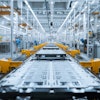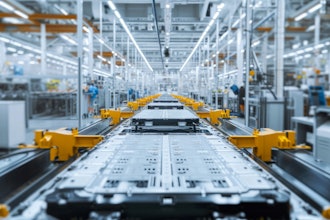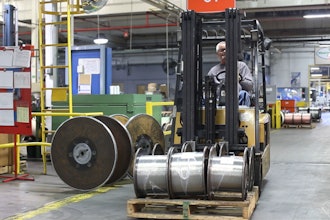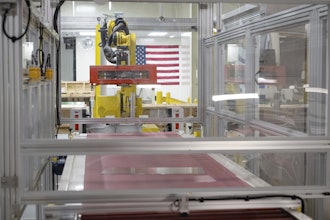The Internet has dramatically changed the buying landscape in many industries and market sectors. Armed with an impressive arsenal of devices, consumers now rely on the Internet to deliver anytime, anywhere access to the products and brands they care about.
But the Internet is also driving important changes in the way suppliers produce and manufacture their products. More specifically, the “Internet of Things” (IoT) is transforming the processes that enable food manufacturers to bring items to market — and has the potential to eliminate costly machinery failures all too common in today’s food manufacturing industry.
Key Trends in the Internet of Things
The IoT refers to the web of connected physical objects embedded for enhanced interactions and communication. In the same way that the Internet makes it possible for users to communicate with one another, the IoT creates opportunities for physical objects and machinery to communicate with each other to improve processes and achieve other beneficial outcomes.
The speed at which the IoT is evolving is mind-boggling. According to Gartner estimates, by 2020 the number of smartphones, tablets and PCs in use will total 7.3 billion units. During the same time period, the IoT will expand much more rapidly, totaling as much as 26 billion units.
Although discussions about hardware tend to dominate IoT conversations, it’s important to know that embedded software, communications services and information services also play key roles in the development of IoT technologies.
When combined with IoT hardware, these components are making it possible for manufacturers across all industries to create more predictable and seamless manufacturing processes. In many cases, manufacturers are using IoT technology to increase the return on equipment investments and to reduce the costs associated with manufacturing operations.
The Potential to Mitigate the Risk of Failure
Equipment is obviously a central player in food manufacturing processes. Leading food manufacturers invest heavily in state-of-the-art equipment designed to improve volume, efficiency and other variables that impact bottom line profitability.
In some ways, the IoT is a logical extension of the push to create more intelligent manufacturing processes. By embedding interactive technology in key machines, food manufacturers gain the ability to automate the optimization of equipment in real time, dramatically reducing or eliminating the risk of equipment failures capable of shutting down the entire process.
Preventing Malfunctions
Equipment failures cost food manufacturers time and money. For example, a simple conveyor belt malfunction can bring the manufacturing process to a grinding halt, at least until the problem has been identified and fixed. In addition to the cost of repairs, the operation incurs costs associated with lost production time, threatening the company’s ability to meet order deadlines and reach targeted performance benchmarks.
The IoT creates opportunities for preemptive notices of looming equipment malfunctions and can even enable the machine to automatically fix the problem before it occurs. By preventing malfunctions, the IoT helps food manufacturers save significant time, money and resources.
Improving Efficiency
IoT technology is well known for its ability to deliver improvements in efficiency. Consider how builders are using smart doors to improve the efficiency of residential and commercial buildings. By monitoring both inside and outside temperatures, these doors effectively interact with thermostats and other devices to optimize heating and cooling functions, reducing energy costs and allowing the property owner to operate in a more sustainable manner.
Similar possibilities exist in food manufacturing. When manufacturing equipment is equipped with smart technology, enhanced interactions generate improved process efficiencies, optimizing the use of energy, while eliminating unnecessary wear and tear on equipment.
Perfecting Processes
Sophisticated algorithms increasingly are being used to compile and analyze exceptionally large data sets to achieve precise business outcomes. Algorithms and big data are especially useful for evaluating causal relationships between points that appear to be disconnected, uncovering insights and trends that would otherwise be invisible to the operation.
In food manufacturing, the IoT presents a scenario in which algorithms and big data can improve the performance of machinery as well as the manufacturing process itself. Rather than relying on guesswork, the operation can leverage large amounts of data to perfect the manufacturing process, reduce downtime and increase return on capital investments.
Although still in its infancy, the IoT holds tremendous promise for improving productivity, efficiency, ROI and other metrics that separate top food manufacturers from the rest of the pack. By exploring opportunities to incorporate IoT technology into their operations now, manufacturers can achieve a competitive advantage and become better positioned to leverage IoT advances going forward.
For more food industry news and information, subscribe here and follow us on Twitter, Facebook or LinkedIn.



















